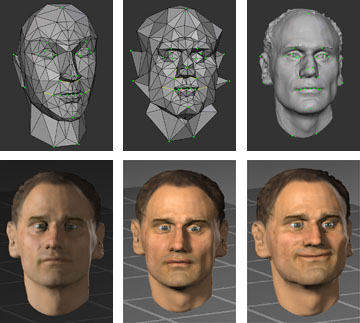Computers and Animations
When we think of animations, the first thing that probably pops into our minds are drawings that have simply come to life. Though this seems so simple, it process of animating a film per say or video game requires a complexity of skillfulness. Computer animation typically deals with objects that are modeled on a larger scale and in precise details, take Dash from the Incredible's series and something as simple as his hair as it blows past him when he's on the move. While he's in motion, his hair there are probably around 100,000 individual elements all working their magic at once, so we see this little insignificant aspect of the film. While surfing the internet for information of animations and computers, I came across a TED talk about the details and elements that are implemented into Pixar Films, it's really fascinating!
Link: https://www.ted.com/talks/danielle_feinberg_the_magic_ingredient_that_brings_pixar_movies_to_life/transcript?language=en
http://graphics.stanford.edu/~srm/images/faces.jpg
As you can see, there can be thousands of polygons in just a simple expression of a face.
Many other more math-based fundamentals are added to films in order to create such an enjoyable experience when watching. The first is rendering which is crucial to the development of a film. Rendering consists of a camera viewing a 3D scene, and the what's seen or rendered by the camera is produced into a 2D image. The light arriving at the camera lens from the scene is what must be accounted for when rendering graphics. From the lighting effect that's produced by the virtual light, the rendering of the scene will reflect or refract light. This reflected and refracted lights "affects" the physical properties (What we view) of the original light and material.
The following integral function shows the rendering process at work. It shows that the light moving away from a point in a given direction is the sum of how much light's being emitted in the same direction. Although we are a few years away from taking calculus, it seems fascinating how you can connect these functions back to animation and the two work like magic!
Finally, one element of computer animation that relates more to Geometry and what we've been studying recently is the representation of a scene. In other words, it's the layout of objects in a scene. In order to arrange an object, stuff needs to get moved around, or "transformed". The same goes for rotations, and dilations or scalings which are all implemented in films.
Link: https://www.ted.com/talks/danielle_feinberg_the_magic_ingredient_that_brings_pixar_movies_to_life/transcript?language=en
http://graphics.stanford.edu/~srm/images/faces.jpg
As you can see, there can be thousands of polygons in just a simple expression of a face.
Many other more math-based fundamentals are added to films in order to create such an enjoyable experience when watching. The first is rendering which is crucial to the development of a film. Rendering consists of a camera viewing a 3D scene, and the what's seen or rendered by the camera is produced into a 2D image. The light arriving at the camera lens from the scene is what must be accounted for when rendering graphics. From the lighting effect that's produced by the virtual light, the rendering of the scene will reflect or refract light. This reflected and refracted lights "affects" the physical properties (What we view) of the original light and material.
The following integral function shows the rendering process at work. It shows that the light moving away from a point in a given direction is the sum of how much light's being emitted in the same direction. Although we are a few years away from taking calculus, it seems fascinating how you can connect these functions back to animation and the two work like magic!
Finally, one element of computer animation that relates more to Geometry and what we've been studying recently is the representation of a scene. In other words, it's the layout of objects in a scene. In order to arrange an object, stuff needs to get moved around, or "transformed". The same goes for rotations, and dilations or scalings which are all implemented in films.


Comments
Post a Comment